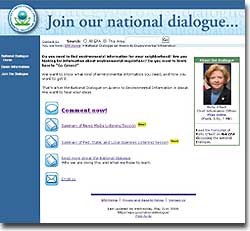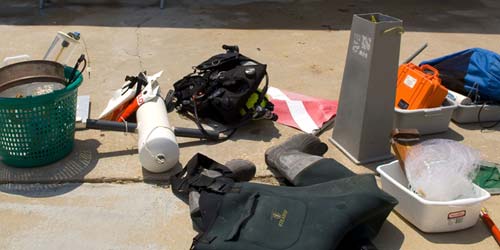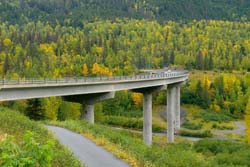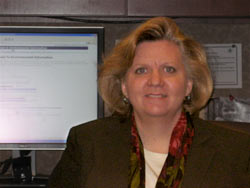Sweet Home Virtual Alabama!
Tuesday, July 1st, 2008About the author: Molly O’Neill is EPA’s Assistant Administrator for the Office of Environmental Information and Chief Information Officer
Recently, I attended a government leadership summit that focused on collaboration. It was represented by state, local and federal leaders. I was there not just to speak but also to learn. I am always looking for ideas outside of EPA that we might take advantage of in our business. Sometimes, you see something special and it opens your eyes to future benefits.
 At an evening session, I saw a demonstration of something called “Virtual Alabama”. I had been hearing the buzz around this for several weeks and it didn’t disappoint. Now, from a technology perspective this wasn’t a big deal to me. It is simply a well orchestrated Google Earth implementation from a statewide perspective. The impressive part was the incredible collaboration that occurred to bring almost all the government related information together visually. And it was at the state and local levels! In one application, the user could view environmental information, crime information, land use information, etc. all at once.
At an evening session, I saw a demonstration of something called “Virtual Alabama”. I had been hearing the buzz around this for several weeks and it didn’t disappoint. Now, from a technology perspective this wasn’t a big deal to me. It is simply a well orchestrated Google Earth implementation from a statewide perspective. The impressive part was the incredible collaboration that occurred to bring almost all the government related information together visually. And it was at the state and local levels! In one application, the user could view environmental information, crime information, land use information, etc. all at once.
Alabama has effectively engaged a small team of people whose job it is to harvest this data and make it available to decision-makers. They are constantly consuming more data and adding new functionality. For example, universities and colleges are now sketching on the maps to show what the insides of their buildings look like. Another cool example involves historical aerial photography. After a recent tornado, officials could look at pictures of towns before and after the tornado to respond to emergencies and also to help insurance companies estimate damage. I also saw how they incorporated a tool EPA uses called “Aloha” into their application to look at toxicity dispersion modeling with just a few lines of code!
At EPA, I talk about how owning data is passé, but using it is not. There are data sources outside of EPA that are very important to our Mission and we need to access them. That’s why building partnerships to share information is so important. If one agency collects the data, technology today allows it to be shared pretty easily. Federal government needs to shift the paradigm from data owners to data collaborators and to embrace technology as the enabler.
Virtual Alabama started as a Homeland Security project that has been adopted by the entire state. I believe its success lies on the fact that there is an organization in place well adapted to constantly harvest data – a data fusion center. This is my take away from another insightful leadership summit in seeing Virtual Alabama as a best practice… something we at EPA can certainly learn from.
Since March, EPA has been reaching out to the public and specific stakeholder groups during our National Dialogue on Access to Environmental Information, and the comment session is now over. I would like to thank those who contributed their ideas during this time. I learned about great examples of information sharing, including Virtual Alabama. Check out the National Dialogue website for summaries of the stakeholder sessions and more on the upcoming strategy document that compiles what we’ve learned.



 I also attended the Exchange Network National Meeting and invited these participants to not only join in the Dialogue, but also to listen and learn with us. The
I also attended the Exchange Network National Meeting and invited these participants to not only join in the Dialogue, but also to listen and learn with us. The  As the Agency’s CIO, people ask me questions all the time. And some of the time they are questions that any good steward of the environment should know the answer to. Or at least, know how to find the answer.
As the Agency’s CIO, people ask me questions all the time. And some of the time they are questions that any good steward of the environment should know the answer to. Or at least, know how to find the answer.